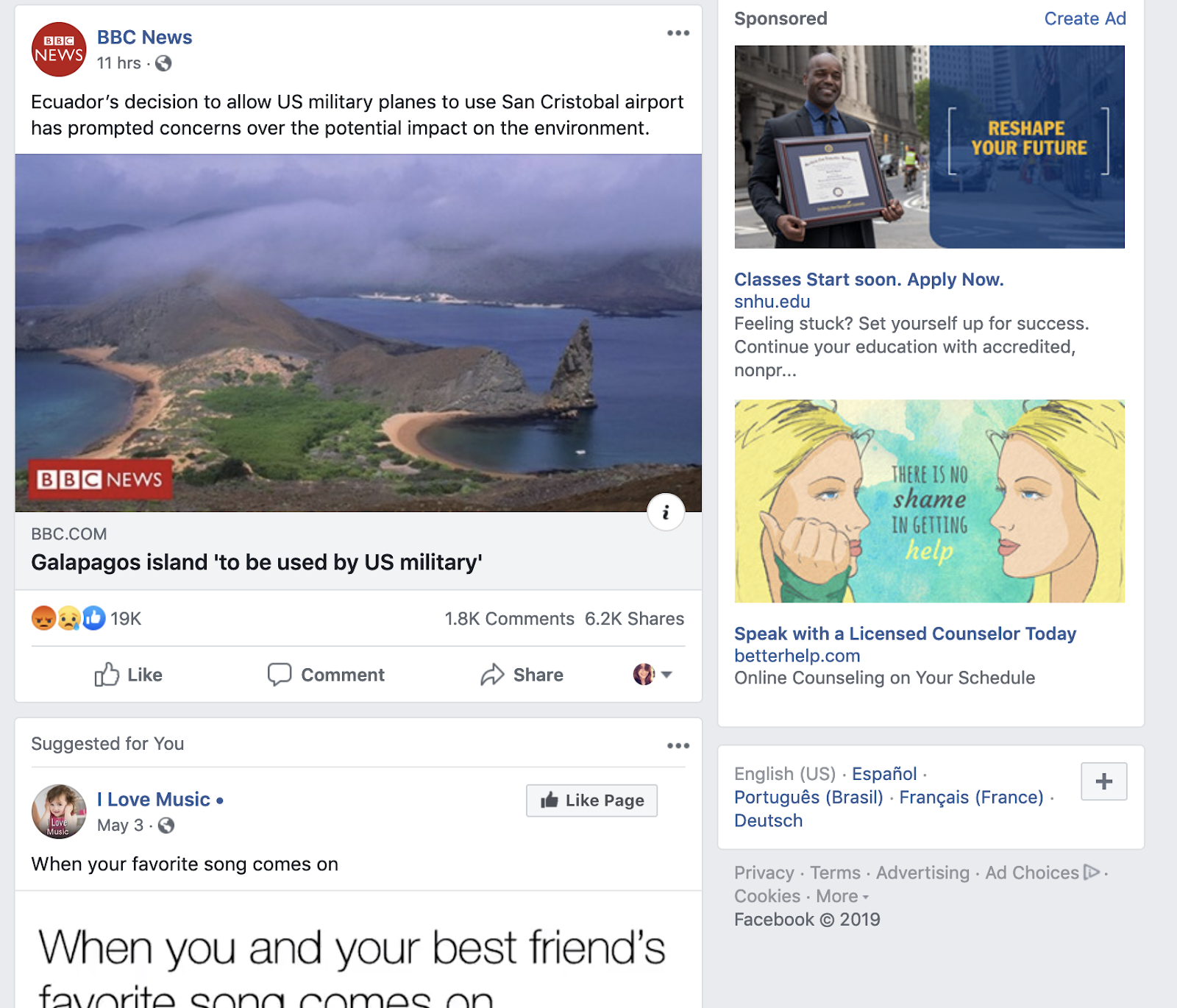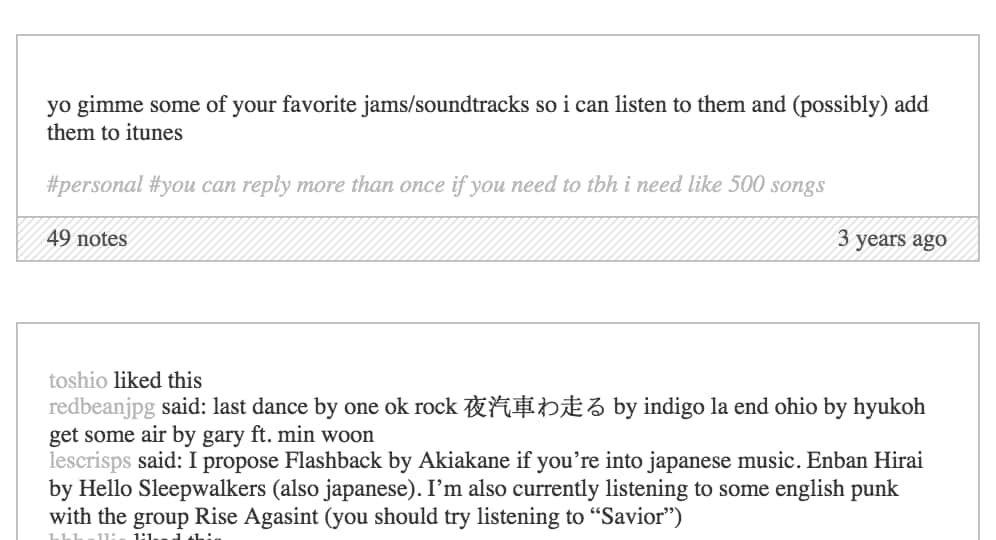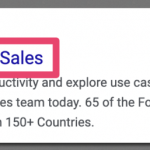- Like
- SHARE
- Digg
- Del
- Tumblr
- VKontakte
- Flattr
- Buffer
- Love This
- Save
- Odnoklassniki
- Meneame
- Blogger
- Amazon
- Yahoo Mail
- Gmail
- AOL
- Newsvine
- HackerNews
- Evernote
- MySpace
- Mail.ru
- Viadeo
- Line
- Comments
- Yummly
- SMS
- Viber
- Telegram
- JOIN
- Skype
- Facebook Messenger
- Kakao
- LiveJournal
- Yammer
- Edgar
- Fintel
- Mix
- Instapaper
- Copy Link
Marketers commonly use social media to increase brand awareness, generate leads, and improve traffic. If you’re tasked with starting a social media strategy for your company, you might be wondering which type of platforms you should be on. Your platform choice will likely change based on your audience.
What is Social Media Used For?
Individuals use social media to express themselves, discuss their interests, connect with friends, and grow their careers. Different social media platforms are used for specific purposes. For example, expressing creativity is most common on TikTok or Instagram; promoting one’s career is common on LinkedIn.
The list of social media platforms is growing, and well-known platforms like Facebook are always evolving and adding new features. With a greater and greater need for a social presence and an overwhelming amount of platform choices, it can be hard to pick which social channels to use.
You might not want to spread yourself too thin by managing a channel on every imaginable platform, but you also don’t want to miss great brand-awareness opportunities.
To help you make informed decisions about which platforms to use, this post will guide you through some of the core types of social media, examples of platforms within each category, and the pros and cons that each type might present. By the end, you should have a much clearer idea of what kind of social media strategy will work for your business.
Types of Social Media
- Social Networking
- Photo Sharing
- Video Sharing
- Interactive Media
- Blogging/Community Building
Social Networking
Examples of Major Platforms
- Facebook: 2.6 billion monthly active users
- Twitter: 166 million daily active users
- LinkedIn: 160 million users in the U.S. alone
Social networking is possibly the most traditional form of social media.
Platforms like Facebook, Twitter, and LinkedIn are often called “networking” platforms because they allow user accounts to interact with each other in a variety of different ways.
Professional Uses
If you’re a small business, like a restaurant, a platform like Facebook could be a great place to start your social strategy. With Facebook, you can build a business profile that includes links to your website and details about your menu.
Once your profile is all set up, you can post regular updates about your business, “like” other pages, and answer customer post comments or messages. Business profiles also allow other Facebook users to give you reviews.
For companies looking to offer a professional service, B2B or publishing companies, LinkedIn is another great way to grow your following. LinkedIn emphasizes career-related networking.
Brands looking to build an audience of professionals from a certain industry can create a business profile there, categorize it with an industry type, and then use posts and messaging to publish updates. They can also use messaging and comment features to interact with their audiences, or users who comment on their posts.
A Twitter account could be helpful to companies in a wide spectrum of industries, from entertainment to e-commerce. This platform similarly allows you to create a profile where you can list and link company information.
You can then use Twitter to post about company updates, tag companies or customers in posts, retweet positive customer tweets, and respond to customer questions via tweet or direct messages. Like Facebook, you can also post content like photos or videos.
On all three networks, users can easily communicate with others through simple actions like tagging, hashtagging, commenting, private messaging, reacting to posts, and re-sharing content.
Aside from social interaction, newsfeeds on common social networking platforms are designed to show off a mix of text and visuals, rather than one primary content type.
This flexibility makes social networking platforms easy to begin a social strategy on because you can experiment with different forms of content before branching out to platforms that require more specific content types.
Here’s an example of Facebook’s newsfeed:

For those who want to dabble in video or graphics, these platforms could be a great place to test this new content. With the growth of video marketing, many have begun to launch more advanced features like Facebook Stories and Twitter’s live streams.
Platforms like Facebook and Twitter have also started to encourage native video and photo uploads more heavily. Recently, Facebook even adjusted its algorithms to favor live video and image uploads. This has caused these types of native content to gain greater user engagement.
If you’re still not sure where to get started, check out our beginner’s guides for Facebook, Twitter, and LinkedIn.
Pros and Cons
Pros
- Facebook, Twitter and LinkedIn are some of the most prominently used forms of social media
- Social networking sites often integrate with scheduling tools like HubSpot, Hootsuite, and TweetDeck software
- All platforms have capabilities for photo and video.
Cons
- Those interested in just posting links may have a harder time getting engagement than those uploading photo and video.
- Some platforms, like Facebook, put individual user posts higher than business posts in newsfeeds.
Photo Sharing
Examples of Major Platforms
- Instagram: 1 billion monthly active users
- Pinterest: 367 million monthly active users
Two of the biggest platforms that specialize in photo sharing are Instagram and Pinterest.
Instagram offers a visual feed with posts showing photos and short videos followed by a caption. Users can also post live video or create Instagram Stories that disappear after one day. Like the social networking platforms above, users can interact with others through tags, likes, comments, or direct message.
Professional Uses
This platform would be helpful to companies like restaurants or stores that want to photograph and display and update followers about their food, goods, or products in a crisp, clean way.
Instagram has become a home to influencer marketing, as 93% of influencer campaigns took place on the platform in 2018. It also offers opportunities for advertising and ecommerce because of its highly-visual layout.
Unlike some social platforms, Instagram emphasize visuals and doesn’t allow link sharing directly in posts. Basic users on Instagram can only share links in their bio. Verified users, or accounts with over 10,000 followers, can post links in their Stories.
To show you how visual the platform is, here’s a look at Instagram’s search feed:

Although basic users have minimal linking options, Instagram has tried to make the platform even more friendly for ecommerce businesses with the addition of Shoppable posts.
Pinterest is well-suited for ecommerce companies, such as those who sell home goods, and businesses that would like a place to share crisp standalone product images with links.
It similarly offers a photo-based feed with posts that can include a photo and short description. Unlike Instagram, it allows all users to link directly to websites or product landing pages in posts.
One interesting aspect of the platform is that users can heart posts from others, or assign them to a themed “board.” For example, users might make boards centered around topics like “Inspirational Quotes” or “Bedroom products.”
Once a board is created, other users can also follow it. A business could potentially make a board with their own product posts, or find their products on another user’s board.
Here’s an example of what a board looks like:

Before getting started on one or both of these platforms, you’ll want to determine whether your goal is to gain brand awareness or link-based traffic.
While Instagram and Pinterest can both be helpful tools for product shots and brand awareness, Instagram’s active audience is much larger than Pinterest’s. Instagram has also hosted over 25 million business profiles.
When choosing a platform, you may want to consider your content-related bandwidth. Both require visual imagery, but you might also need to include video creation within your Instagram strategy. Here’s a great guide that demonstrates what it takes to gain followers on Instagram.
Pros and Cons
Pros
- Platforms like Instagram help with brand awareness. Approximately 60% of people say they’ve learned about products or services on Instagram.
- Pinterest and Instagram provide an outlet for showing off visual content or product shots.
- Platforms like Instagram also allow you to experiment with visual or short video content
Cons
- Upkeep on these platforms might require a photo budget or dedicated production time.
- Some platforms, like Instagram, require you to post from a mobile app.
Video Sharing
Examples of Major Platforms
- Youtube: Over 2 billion monthly active users
- Vimeo: 240 million monthly viewers
Professional Uses
Roughly 88% of marketers say video gives them a strong ROI and 90% feel the level of video competition has increased. Adding a video platform to your social strategy could make your brand look relevant and keep you up to speed with your competitors.
Video can be helpful to a wide range of industries. While a restaurant could have a vlog with cooking tips, a technology company might focus its video strategy around product demos.
To help you pin down a strategy that’s right for your industry and service, check out our video marketing guide.
When it comes to long-form video, Youtube and Vimeo are the leading platforms. While Youtube has the bigger audience base and better SEO capabilities, Vimeo’s smaller platform is very community driven.
Youtube also seems to have better opportunities for advertisers and monetization, while Vimeo offers viewers the perk of no pre-roll ads.
For a longer list of similarities and differences, check out this head-to-head piece where we compare the business capabilities of Vimeo and YouTube.
Along with Youtube and Vimeo, the more traditional social networking platforms have also begun to embrace video marketing more aggressively. In the last few years, Facebook launched Facebook Stories and Facebook Live, and added a tab on their mobile app dedicated to video. Meanwhile, Twitter has allowed users to launch live video streams which are powered by its Periscope software.
Pros and Cons
Pros
- Videos can be longer than on other social platforms.
- Both platforms have website linking capabilities.
- Platforms like Youtube and Vimeo often offer analytics.
- Both Youtube and Vimeo have search optimization features.
Cons
- Content might take more time and money to create.
- These platforms require more backend tasks like SEO.
Interactive Media
Examples of Major Platforms
- Snapchat: 229 daily active users
- TikTok: 100 million monthly active users in the U.S. alone
Apps like Snapchat and TikTok allow users to share photos and videos, they also have a variety of unique interactive and highly experimental features. These two apps include AR/VR filters, musical overlays, and interactive games. Their audience bases are also prominently Gen-Z.
Professional Uses
Because mainly large companies are just starting to experiment with these new applications, marketers who are just beginning a social strategy don’t need to prioritize these interactive apps before traditional social networking platforms.
The large companies on these platforms tend to produce high production-level content. Brands with large followings might also publish Snapchat Stories, or videos that are curated from fans. Without a high-budget or giant online following, these strategies might be difficult for a company that’s just starting out on social.
Brands and influencers on these apps tend to cater their content to the platforms’ younger audiences. For example, on Snapchat, you might see stories that present beauty tutorials, wellness tips, news, or trendy new products.
If you’re really interested in interactive media, there are still a few viable ways you could get involved with Snapchat or TikTok.
While major brands, like VICE and BuzzFeed have become Snapchat Discover partners, the average business can still create a Snapchat business account that can be searched and friended by users. This account allows you to send publish temporary stories, just like individual accounts can. However, those with a business account can also purchase ad space.
Here’s a comprehensive video that explains how to use Snapchat:
If you’ve set up an account, check out this guide to getting started on Snapchat.
TikTok, an app based around short, repetitive clips — similar to Vine — offers five types of advertising options for businesses. While large businesses may find value in all five, smaller businesses may lean more towards “In-Feed Ads.” These ads are 9-15 second clips that can be skipped by the user.
Guess is one notable brand that has used its account to create trending campaigns with trendy hashtags. Universal Pictures has also had influencers create posts to promote its films.
If you do test out these platforms, you might want to make sure your industry and content fits in with the young age demographic. You should also try to properly estimate the time and money that might go into keeping these accounts up to date and relevant.
Pros and Cons
Pros
- These platforms are very creative and experimental.
- They have young audiences, which can help brands better target Gen-Z.
- Stories can be used to give your following a behind-the-scenes look at your brand.
Cons
- Producing regular content could be expensive and time-consuming.
- Business accounts aren’t promoted up-front on the Snapchat interface. You may want to promote your channel on your website or other social channels because users will need to search for you with your Snapcode or username.
- Snapchat and TikTok are limited to mobile and aren’t as easy to use.
Blogging/Community
Examples of Major Platforms
- Tumblr
Tumblr and Reddit both allow users to post about interesting niche topics, like memes, events, politics, and pop-culture. When users publish a post, these platforms allow other users to share them or add to the conversation with their own commentary.
Professional Uses
Both blogging and community building platforms could be helpful to those who want to encourage discussion around very niche industries or topics. For example, on these platforms, you might see discussion about anything from alternative health to machine learning.
By blogging, you can write posts about topics in your company’s industry and link them to your product or site. While many people have a blog on their website, platforms like Tumblr might be great to use if you haven’t set this feature up — or just want to see what others in your industry are blogging about.
With a discussion site like Reddit, you could share a link or a post about a specific topic on a discussion board related to your industry and see how users respond. You could also start your own board if a topic you’re looking to encourage discussion on doesn’t have one yet.
These two platforms specifically encourage web chatter and post shares from users that care about the same topics.
Both also allow users to follow you or subscribe to your blogs or Reddit boards so your content could show up on their feeds. Here’s an example of what Reddit’s feed looks like.

When someone publishes something on Reddit, other users can up-vote or down-vote it. Up-voting makes a post show up higher in Reddit feeds while down-voting does the opposite.
On Tumblr, the feeds are organized by time. However, a post can show up higher when it is re-shared by other users. When a user shares or interacts with your Tumblr content, they give it a note. When they reshare, they have the option to post a comment with the post that gets added to a thread.
Here’s an example of how notes and threads can be used to encourage discussion:

Pros and Cons
Pros
- Both platforms allow you to share text posts, photos, and videos about your business, brand, or individual thoughts.
- These platforms enable you to start conversations about a topic.
- Both platforms allow linking to outside websites.
Cons
- Longer blog posts might take time to craft or write.
- Getting downvoted on Reddit or no reaction from Tumblr users means your posts may go unseen.
- Your audience might be too niche or limited to just those on the specific platform you use.
A Few Things to Consider
Before you start logging in and setting up your accounts on a bunch of platforms, be sure to consider these factors:
- How much time do you have to devote to strategizing around a social platform?
- Do you have resources for creating graphics or videos?
- Do your goals involve boosting brand awareness, or traffic and revenue?
- Will you need an additional staff member to run this platform, or will it be easy to maintain?
Once you’re on a platform or two, be sure to stay in the know of how it’s changing and what marketers are doing. For a current outlook, check out our Ultimate Guide to Social Media Marketing.
Originally published Dec 7, 2020 7:00:00 AM, updated December 08 2020

![→ Free Download: Social Media Calendar Template [Access Now]](https://no-cache.hubspot.com/cta/default/53/3e56e15d-47bd-46c9-a256-99fde52abfe7.png)


